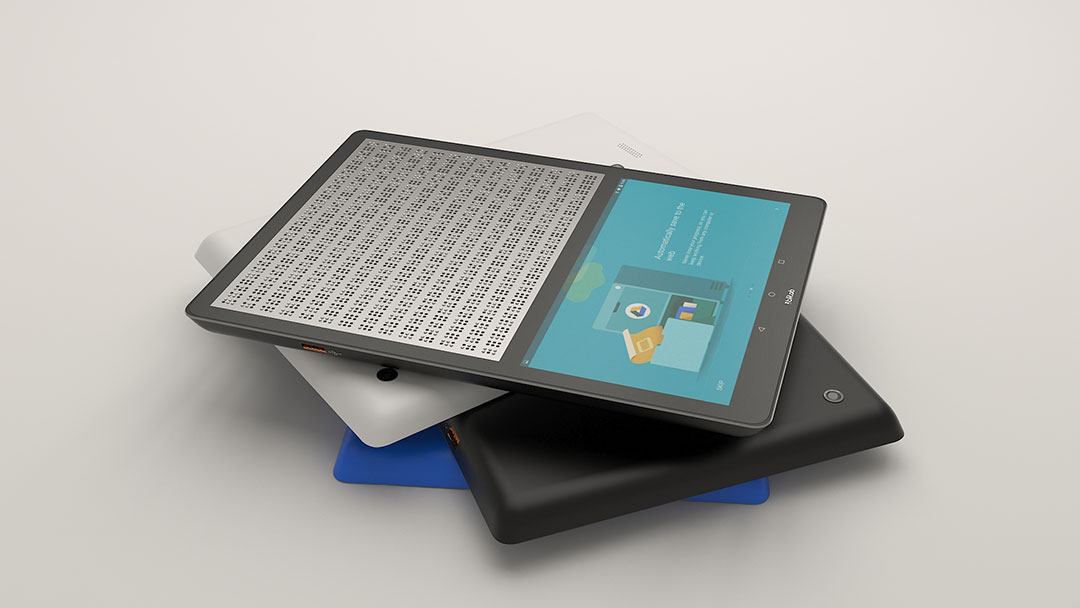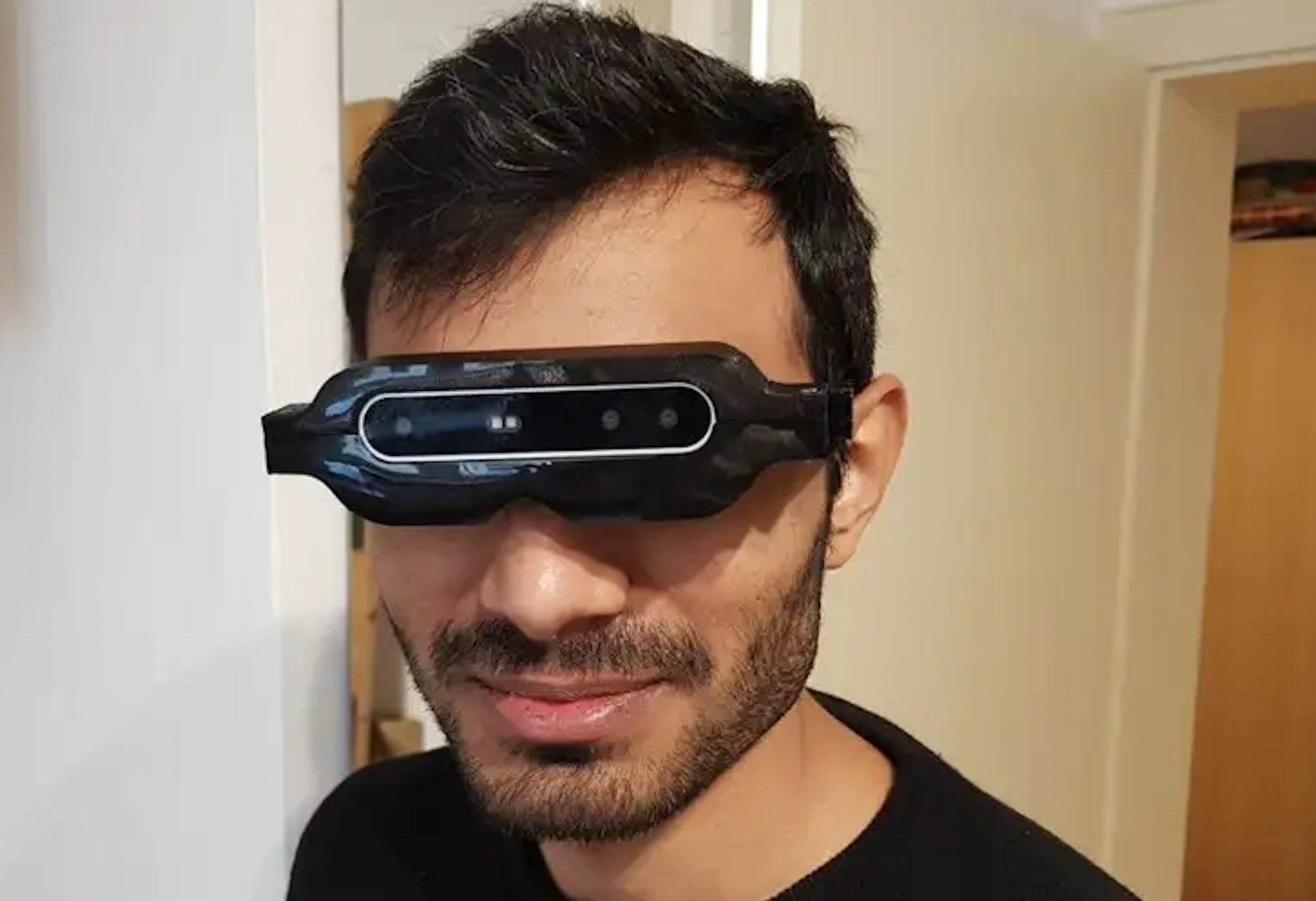Discover Cutting-edge Devices Developed for the Aesthetically Damaged
The growth of innovative tools for the visually damaged stands for a considerable improvement in accessibility and freedom. Technologies such as clever glasses with AI capabilities and mobile applications developed to offer acoustic summaries are reshaping daily experiences for users. In addition, wearable tools that employ haptic comments boost ecological understanding, while contemporary Braille innovations offer new ways to engage with message. As these devices remain to evolve, their influence on the lives of those with aesthetic disabilities raises essential concerns concerning the future of inclusivity and freedom in various elements of life. What lies in advance in this technological landscape?
Smart Glasses for Navigation

Smart glasses created for navigating are revolutionizing the method visually impaired people interact with their environment. These sophisticated tools use a combination of video camera modern technology, artificial knowledge, and acoustic responses to give real-time information about environments. By utilizing challenge detection systems, wise glasses can alert individuals to prospective hazards, enabling safer wheelchair in both acquainted and unknown setups.
The assimilation of GPS modern technology even more boosts navigating capabilities, enabling customers to obtain auditory instructions as they move. This hands-free strategy not just cultivates self-reliance however also equips aesthetically impaired people to navigate city landscapes with boosted confidence. Additionally, numerous clever glasses are geared up with attributes that identify sites and street signs, giving contextual details that boosts the individual experience.
Moreover, the development of these devices is continually advancing, with companies working to enhance the accuracy of object acknowledgment and expand the series of navigational features. As clever glasses become a lot more inexpensive and available, they hold the potential to considerably transform day-to-day life for aesthetically damaged individuals. Inevitably, these cutting-edge tools stand for an essential action towards inclusivity, offering boosted wheelchair and a better sense of autonomy for individuals browsing the world around them.
Mobile Apps for Daily Living
Just how can mobile applications boost the daily lives of visually impaired individuals? Mobile applications are changing the way visually impaired individuals browse their environments, handle everyday tasks, and gain access to info. These applications offer essential assistance via numerous capabilities, promoting independence and improving quality of life.
A number of innovative mobile apps are created particularly for everyday living. For example, applications like Be My Eyes connect visually impaired individuals with sighted volunteers using video telephone calls, permitting them to receive real-time support with jobs such as reviewing labels or navigating unknown rooms. Seeing AI, developed by Microsoft, uses synthetic intelligence to define surroundings, checked out message, and identify items, effectively transforming a smart device into a powerful tool for daily support.
In addition, navigation applications tailored for the aesthetically damaged, such as Aira and BlindSquare, supply audio-based instructions and ecological information, enabling individuals to traverse their surroundings safely and confidently. Beyond navigation and instant assistance, mobile apps likewise sustain company and job monitoring, with attributes that assist customers set suggestions, develop order of business, and track visits. In summary, mobile applications act as indispensable sources, equipping aesthetically impaired people to lead even more independent and meeting lives.
Wearable Technologies for Aid
Empowerment with innovation is significantly obvious in the world of wearable devices developed to help visually impaired individuals. These cutting-edge tools incorporate flawlessly right into life, enhancing navigating and supplying essential responses to users. Wise glasses equipped with cams can check out and recognize faces message out loud, enabling individuals to engage more confidently in expert and social setups.
An additional remarkable advancement is using haptic comments systems in wearable tools. These systems use resonances or other tactile signals to communicate information regarding the customer's atmosphere, such as barriers or adjustments in surface, boosting mobility and security. Wearable innovations also consist of wristbands that attach to smartphones, informing individuals to notices through subtle resonances, therefore boosting connectivity without reliance on visual signs.
As these technologies continue to develop, they are not just boosting self-reliance for aesthetically damaged individuals yet also fostering a higher feeling of addition in society. By bridging the space in between challenges dealt with in everyday living and find more information the potential for freedom, wearable technologies function as critical tools in the mission for equality and empowerment for those with visual impairments.
Audio Summary Tools
Audio description tools play an essential duty in improving accessibility for aesthetically damaged people, giving them with the capacity to engage with visual media. Smart glasses for the visually impaired. These devices provide narrated descriptions of vital visual components in films, tv programs, and live efficiencies, ensuring that individuals can fully understand the context and feelings shared through visuals
Audio description can be incorporated right into different platforms, consisting of streaming services, movie theater testings, and live cinema. Lots of prominent streaming solutions currently consist of audio description as an accessibility feature, enabling audiences to link select it easily. In enhancement to conventional media, specialized apps additionally exist, giving audio descriptions for art exhibits, museums, and other social occasions.
The performance of audio description rests on the ability of the narrators, who should convey aesthetic information succinctly without diminishing the initial audio. Advancements in this field are additionally paving the means for more tailored experiences, where customers can change the degree of information and pacing according to their choices.
Braille Innovations and Devices
Braille advancements and tools have substantially changed the method visually impaired people engage with message and details. Modern advancements have actually led to the growth of functional tools that boost proficiency and independence among users.
Moreover, portable Braille notetakers incorporate conventional Braille input with modern functionalities, promoting note-taking, organizing, and document editing on the move. Wearable technology for low vision. These portable devices often feature text-to-speech capacities, connecting the void between Braille and auditory details
On top of that, cutting-edge Braille printers have emerged, allowing individuals to generate Braille tags, files, and academic products efficiently. This accessibility cultivates higher engagement in educational and expert atmospheres, eventually promoting inclusivity.
Furthermore, study right into smart Braille technologies remains to increase. Gadgets that incorporate man-made knowledge are being discovered to provide real-time navigation assistance and contextual details, improving the user experience in varied setups. Generally, these technologies show a commitment to equipping additional hints aesthetically damaged individuals via modern technology, ensuring they can easily accessibility and engage with the world around them.

Conclusion
The improvement of ingenious devices for the visually damaged significantly enhances freedom and quality of life. These modern technologies not just foster greater incorporation but also advertise autonomy in everyday activities, inevitably contributing to a much more available and fair society for visually damaged people.
As smart glasses end up being extra budget-friendly and accessible, they hold the possible to significantly transform day-to-day life for visually impaired customers. Mobile apps are reinventing the means visually impaired users navigate their settings, manage everyday jobs, and access info. Applications like Be My Eyes connect visually impaired individuals with sighted volunteers using video telephone calls, permitting them to receive real-time support with jobs such as reviewing labels or navigating unknown areas.Furthermore, navigating applications customized for the visually impaired, such as Aira and BlindSquare, provide audio-based directions and ecological details, making it possible for users to traverse their surroundings securely and with confidence.The innovation of cutting-edge tools for the visually impaired considerably improves freedom and top quality of life.